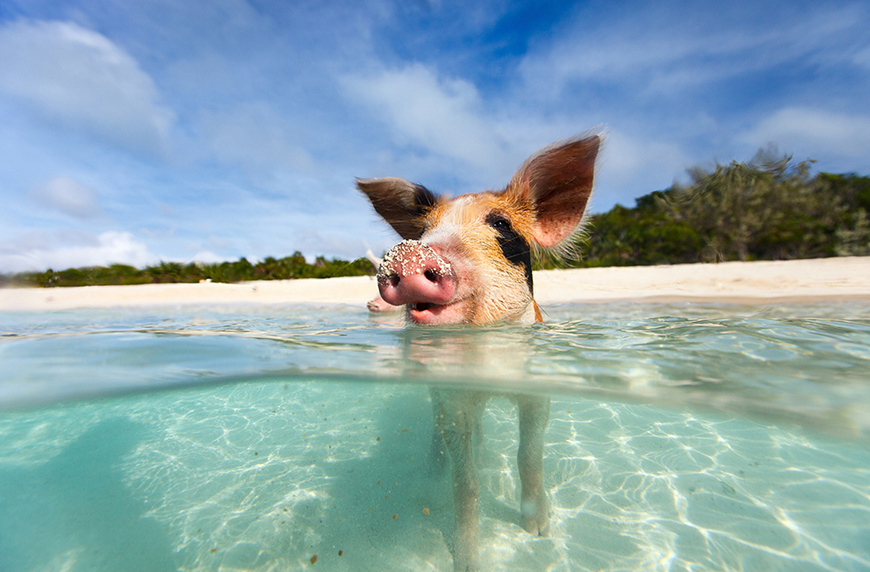When I first came across videos of a bunch of wild pigs living the dream on their very own island in the Bahamas, I immediately started planning a visit. As someone who hates seeing pigs cooped up in cages, it was so refreshing to know there was a place in the world where they were living out their lives just like they should be. But sadly, after doing some research, “Pig Island” was exactly as it seemed—too good to be true.
Michelle Cehn, founder of World of Vegan, was just as excited about the famous island as I was until she actually made the visit. Immediately after arriving, it became very clear that there was a much darker story behind the happy-go-lucky tourist trap. It’s no factory farm, but it’s not even close to paradise, either.
1. Many Pigs Are Killed
One of the hardest things to grasp out of what Cehn discovered is that some pigs on the island are killed to maintain a small, less aggressive population. Without birth control, the female pigs on the island can have 20 or more piglets a year, and considering they keep the group of pigs pretty small (around 20 or so total), that leaves a sad fate for the rest of the clan. When she talked to an island local, she was told population control is managed by killing the majority of the pigs, which end up being roasted on a skewer and eaten by those in the area.
2. The Pigs Get Badly Sunburned
Just like humans, pigs have incredibly sensitive skin. And after talking to a pig expert, Cehn confirmed that prolonged sun exposure could really hurt the pigs and even lead to skin cancer. Since pigs normally cover themselves in mud to protect their skin, it’s no wonder they suffer from severe burns on an island where there’s no access to a sun protectant or shelter. Sadly, sand isn’t going to do the trick.
3. The Pigs’ Only Food Source Is From Locals and Tourists
In the past, some of the island’s pigs were found dead, and the cause of death is thought to be from tourists feeding the pigs something poisonous or alcoholic. Considering Cehn discovered the pigs’ primary source of food comes from locals and tourists, it’s really no surprise—they don’t know what pigs should and shouldn’t eat. Cehn also found the pigs can get aggressive because of their hunger levels: they’re always competing for their next meal and will pretty much eat anything they can get their snouts on.
4. No One Is Looking Out for the Well-Being of the Pigs
All in all, these pigs aren’t living out some tropical dream: They’re on the island purely for profit. According to Cehn, the success of “Pig Island” is only encouraging locals to branch out and bring pigs to other islands to make more money. In the meantime, these poor pigs have peeling snouts and scabbed heads because of sun damage, don’t have enough food to eat, and are killed and eaten to keep the population small.
Unfortunately, if something seems too good to be true, it probably is. Instead of supporting “Pig Island,” meet cute, funny, and smart pigs at a farm sanctuary where they’re happy, taken care of, and loved unconditionally—not exploited for financial gain.
Updated from March 2, 2017.

